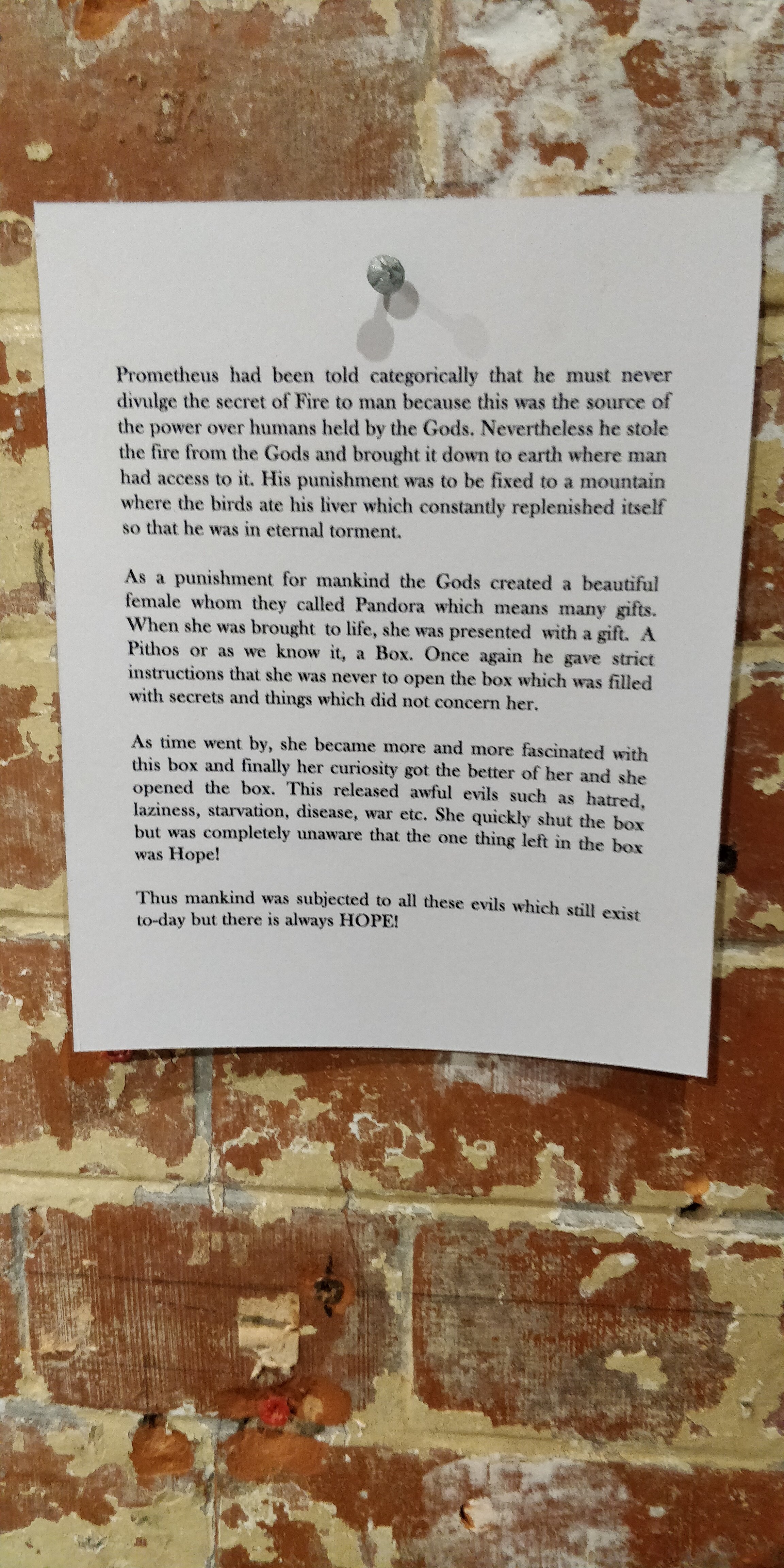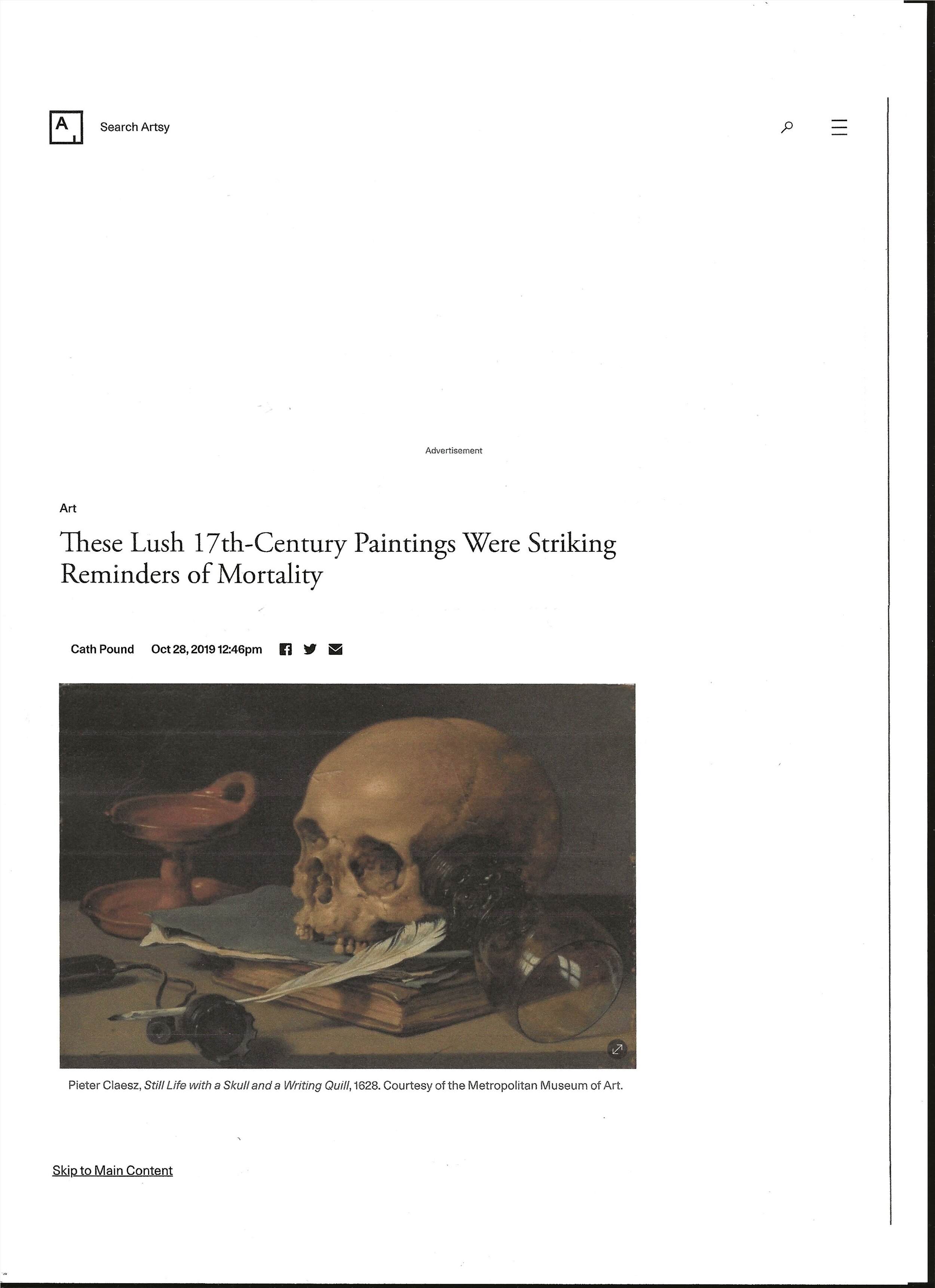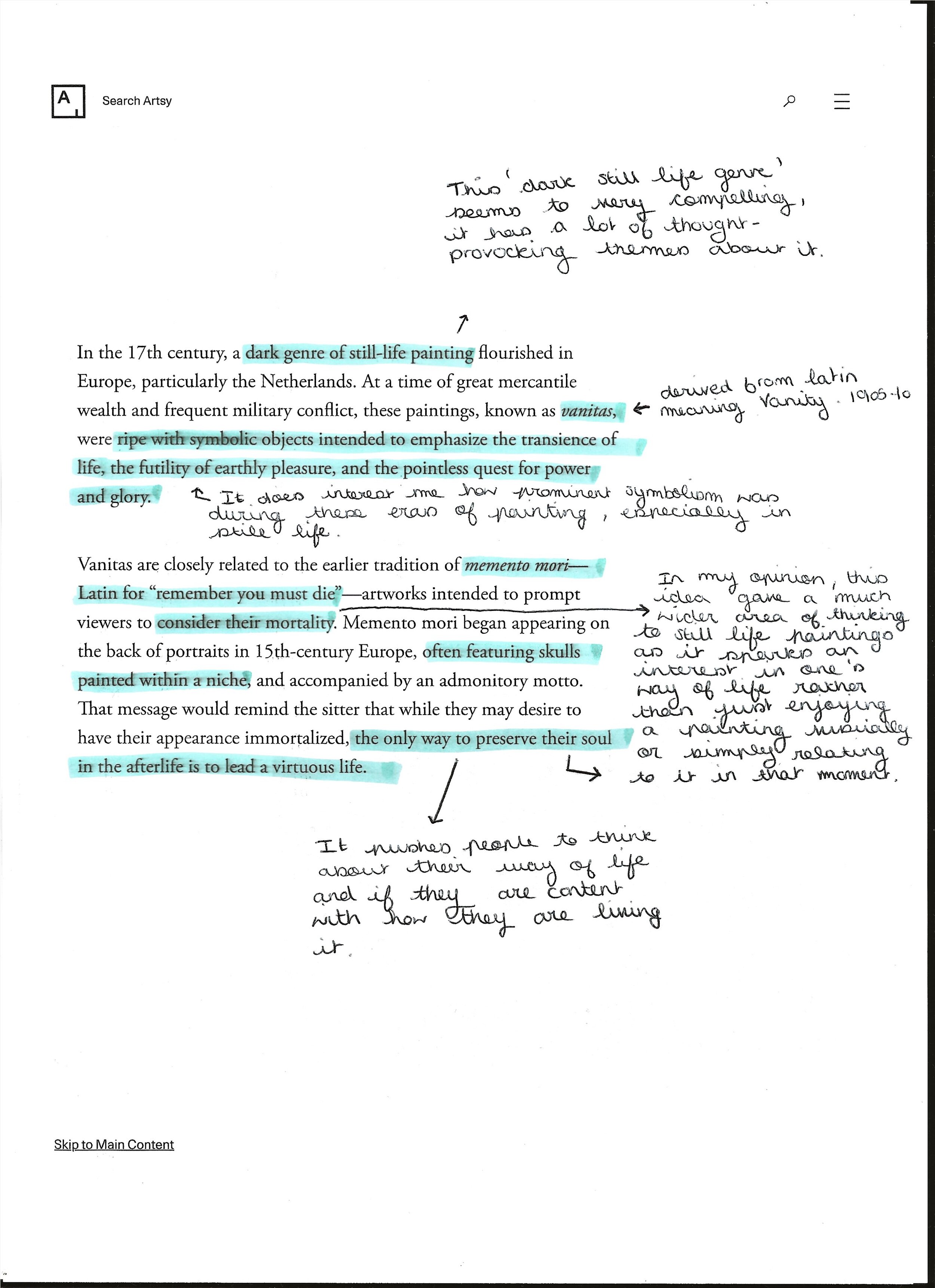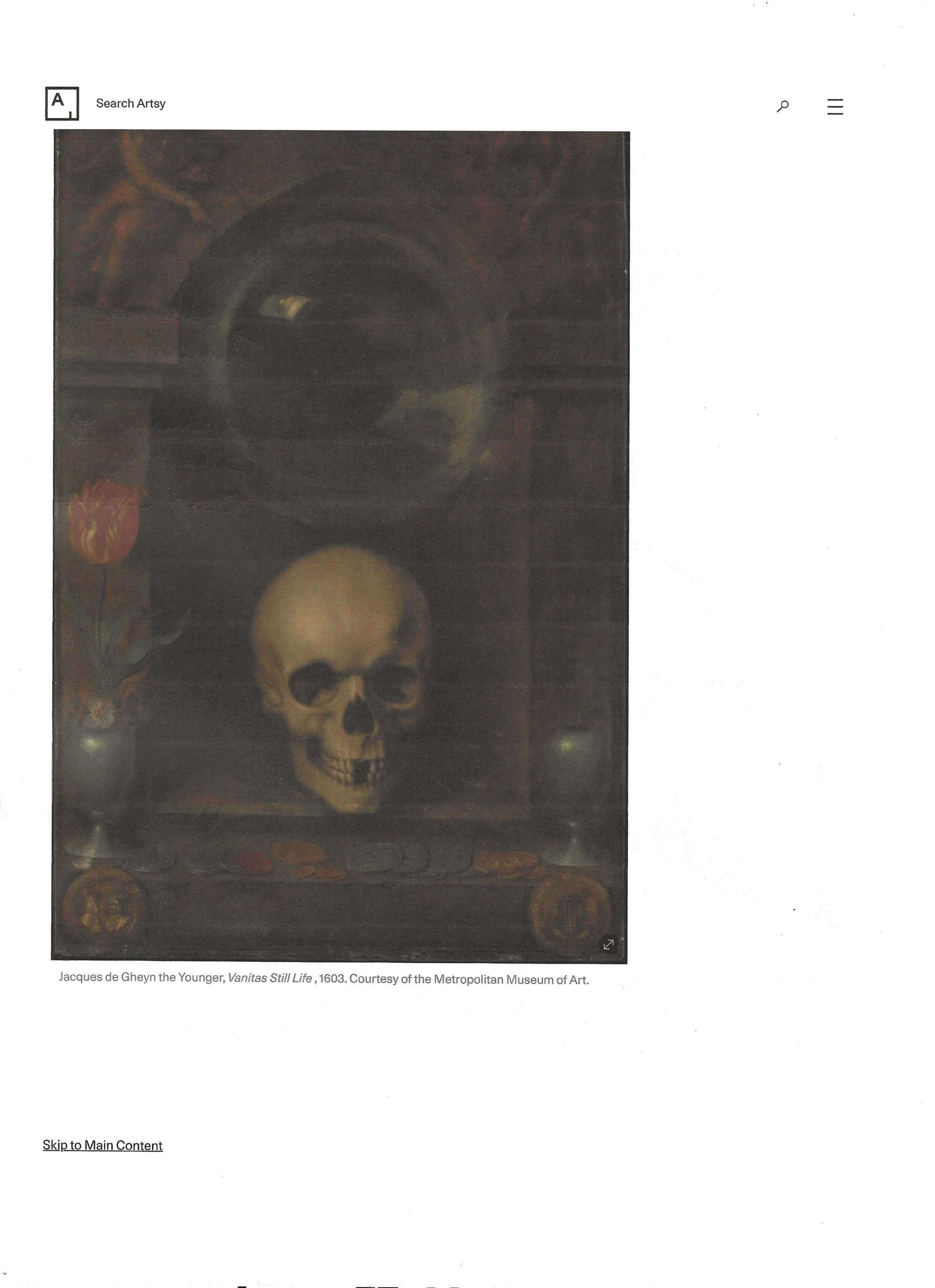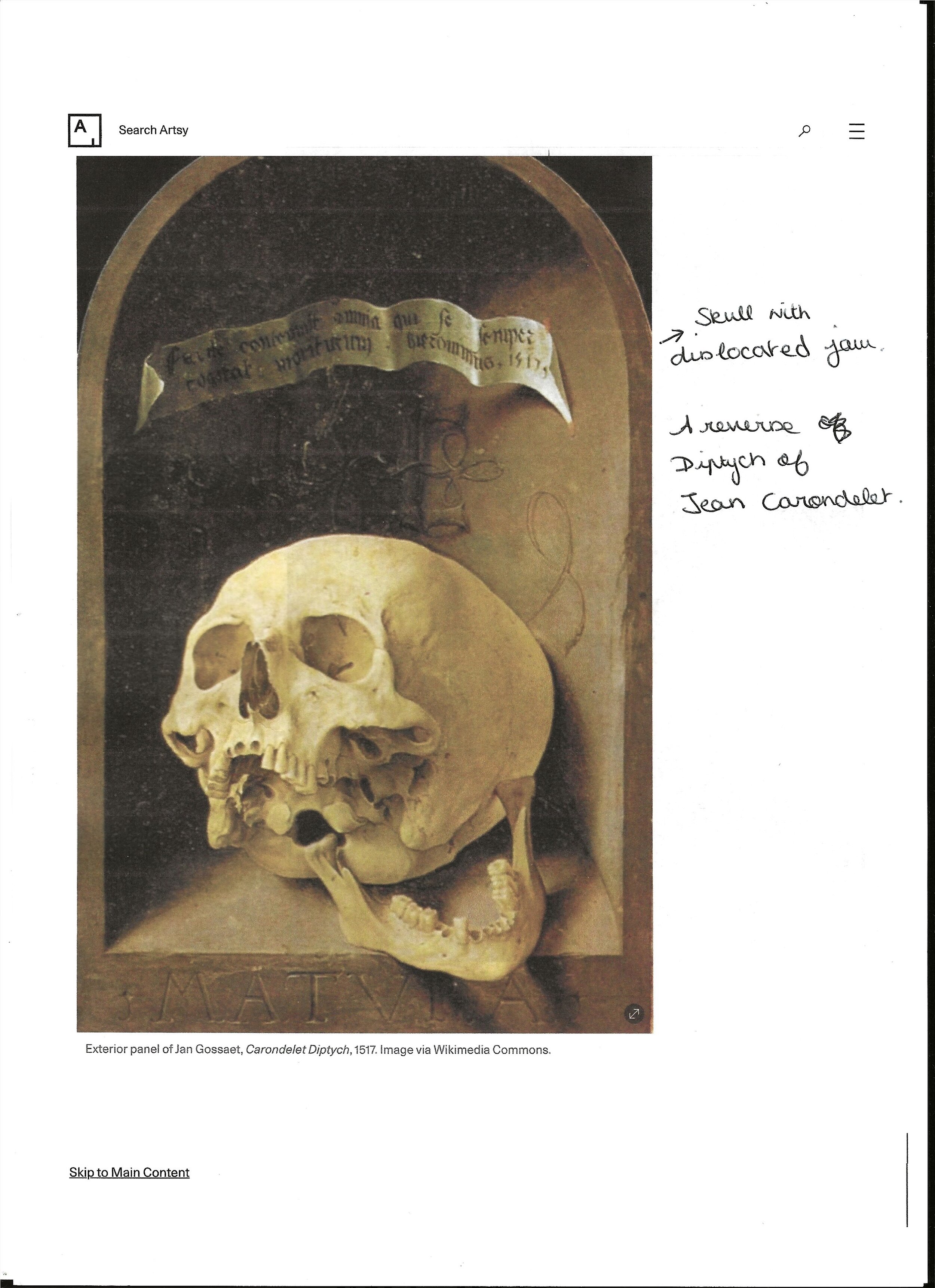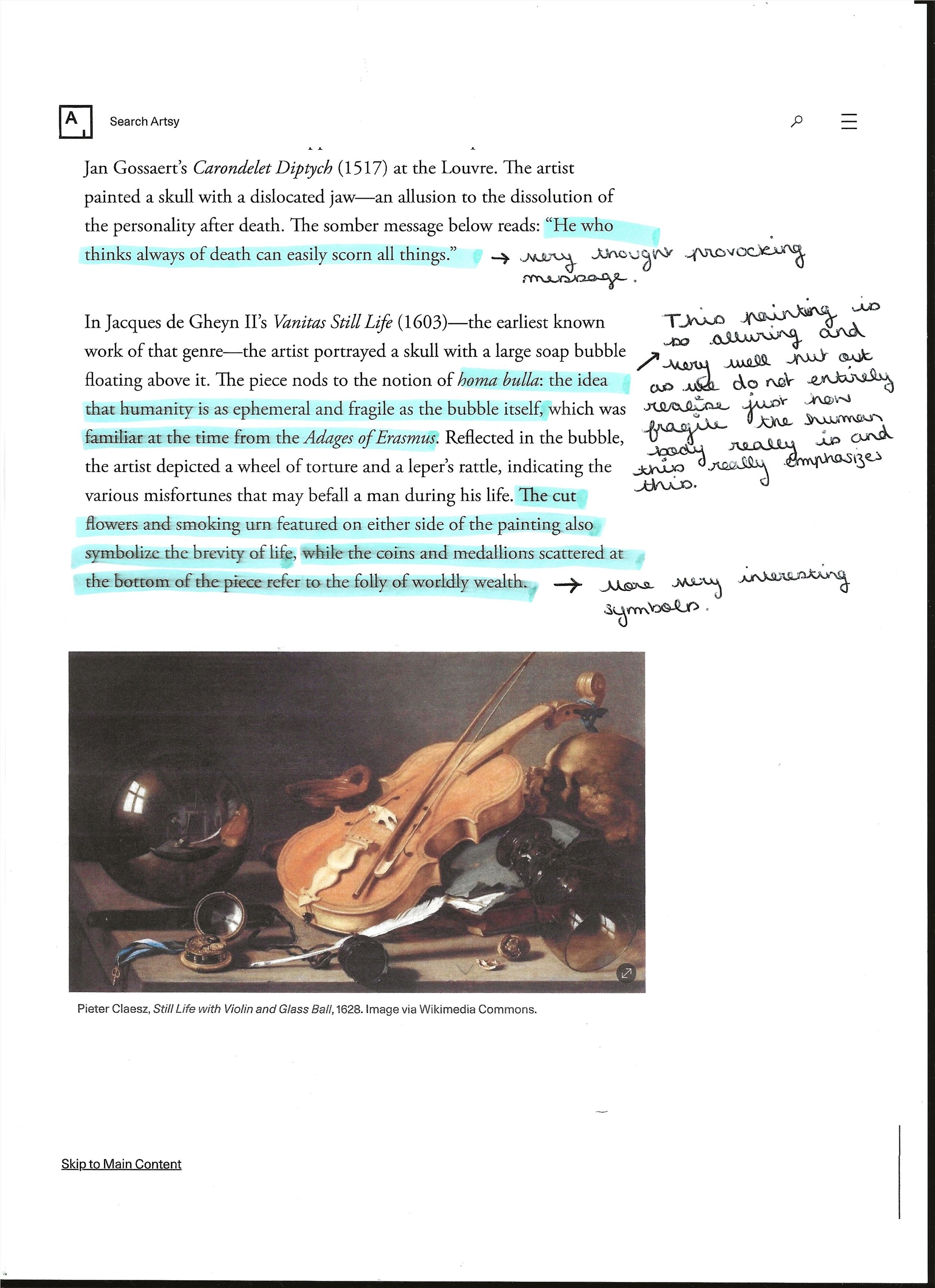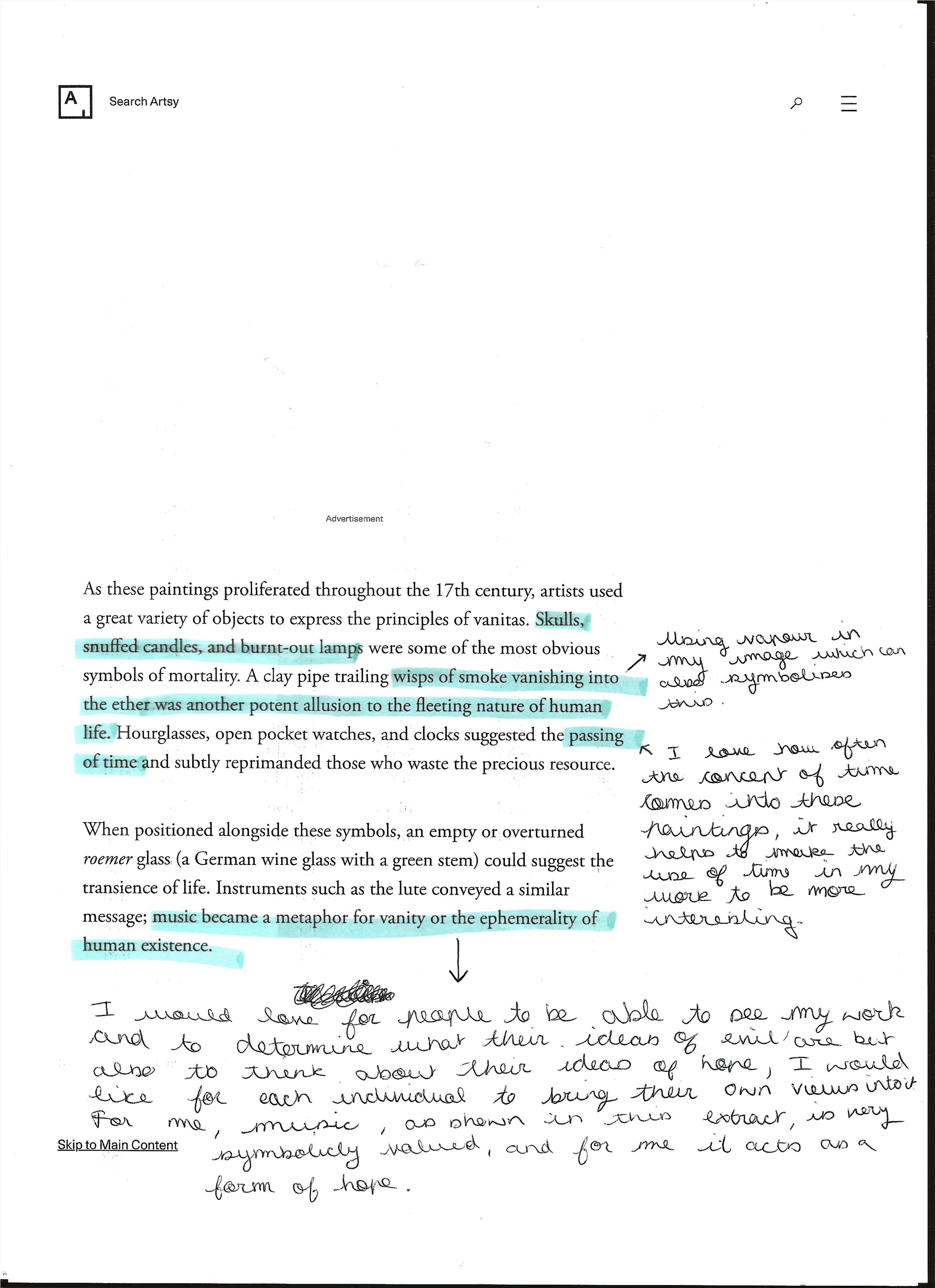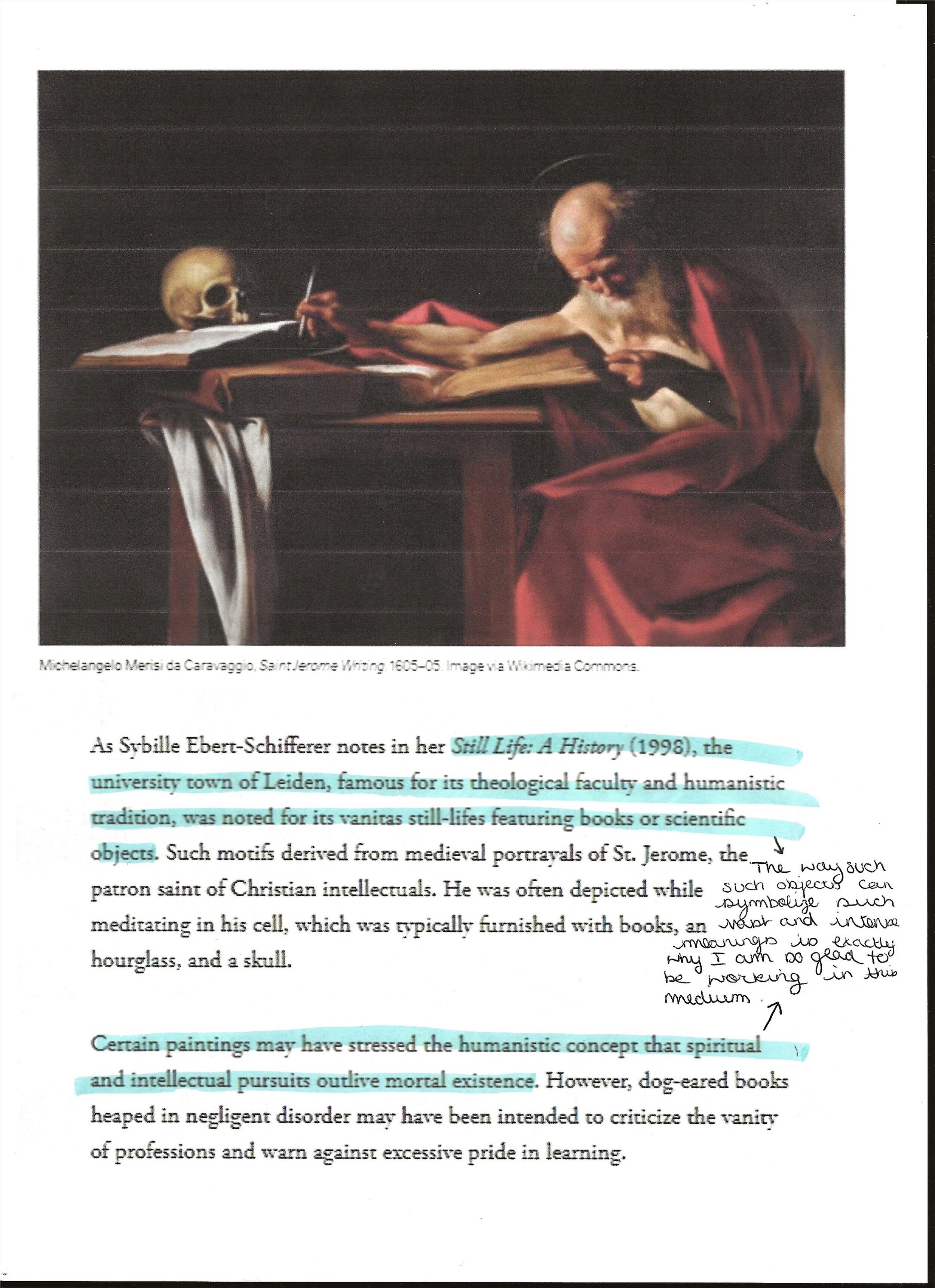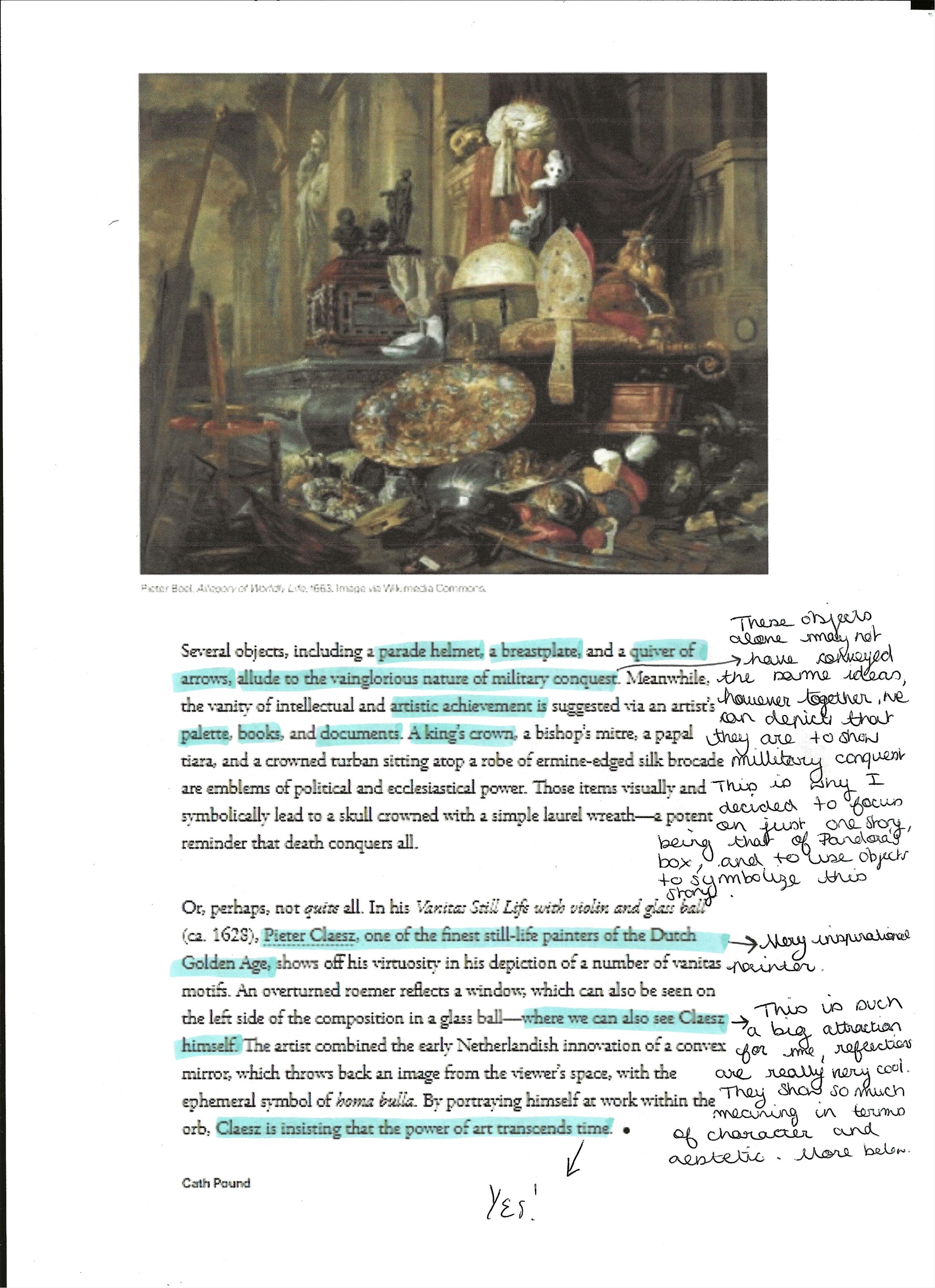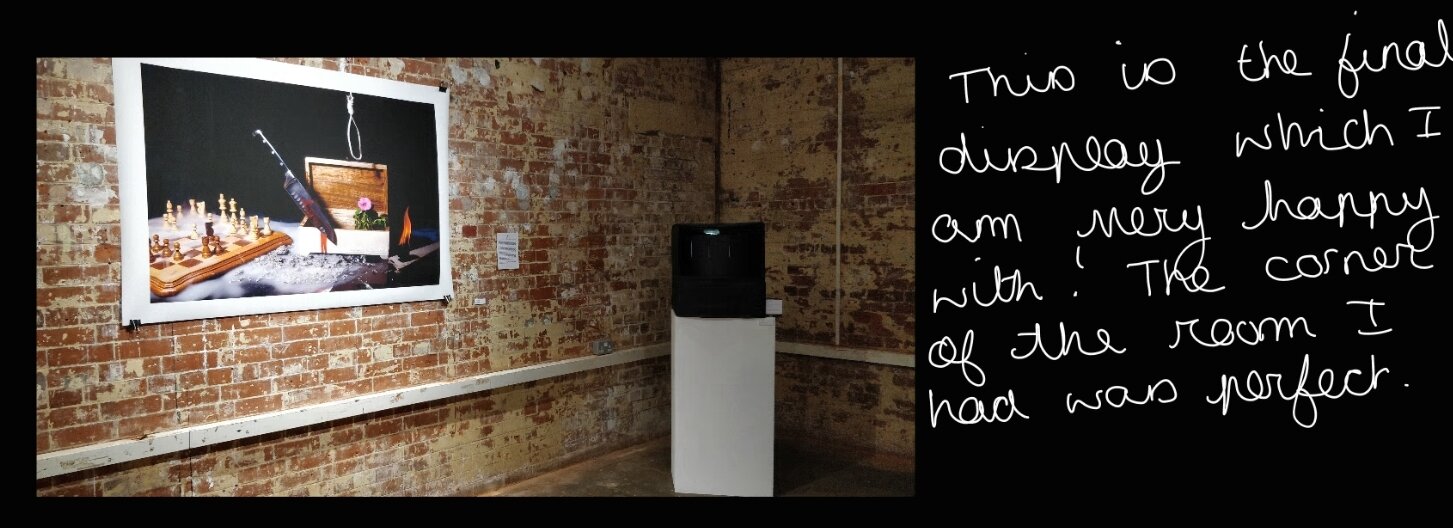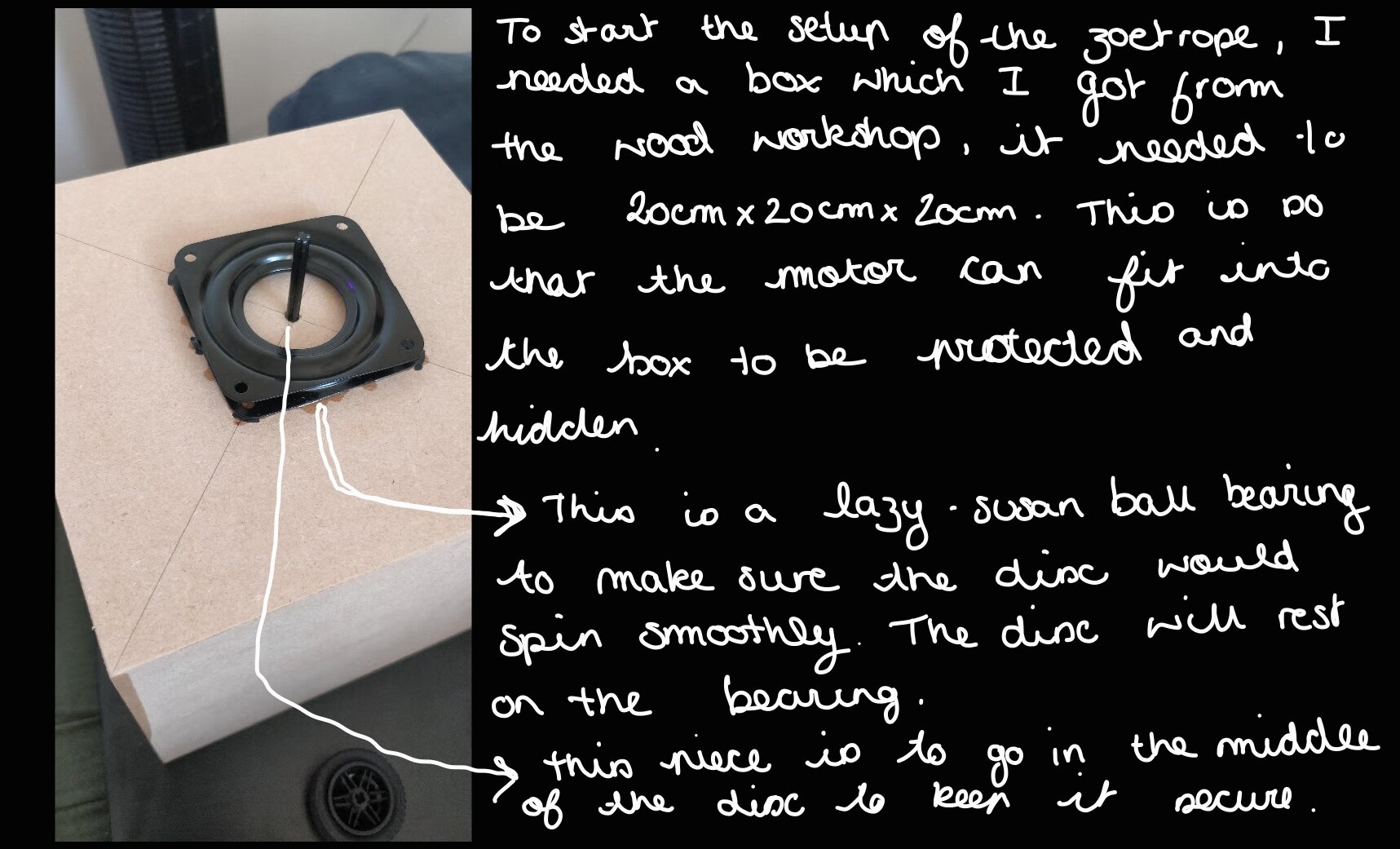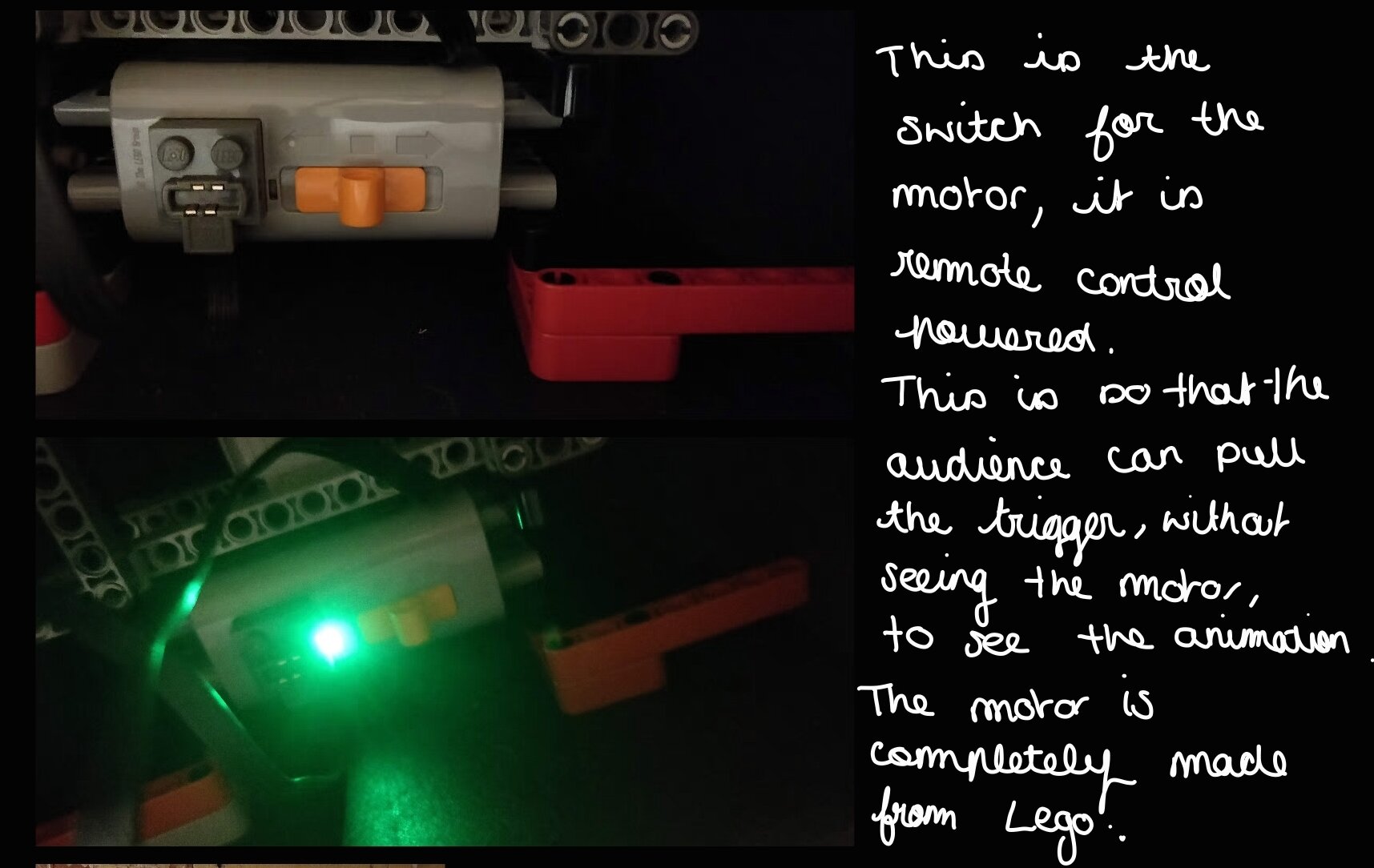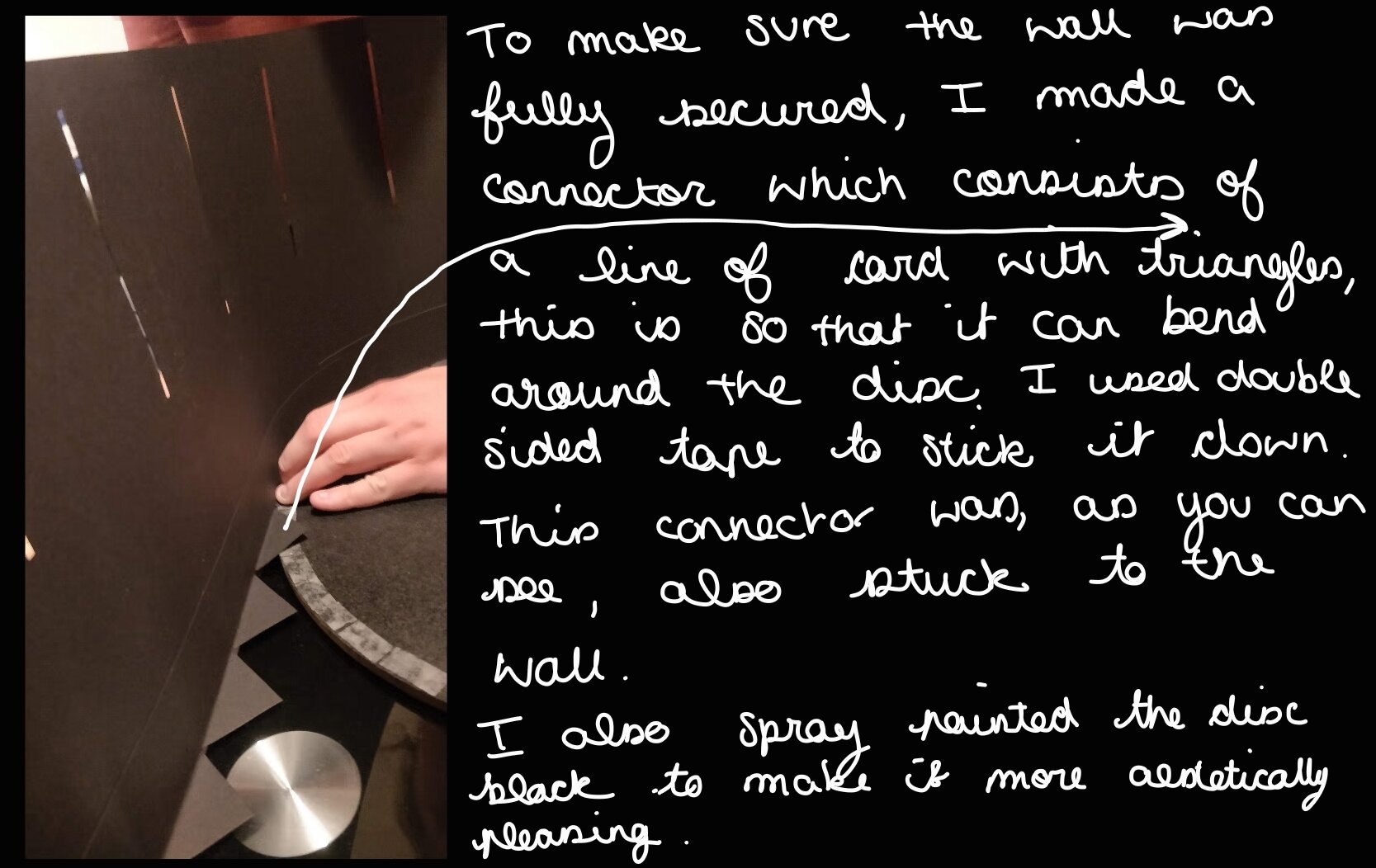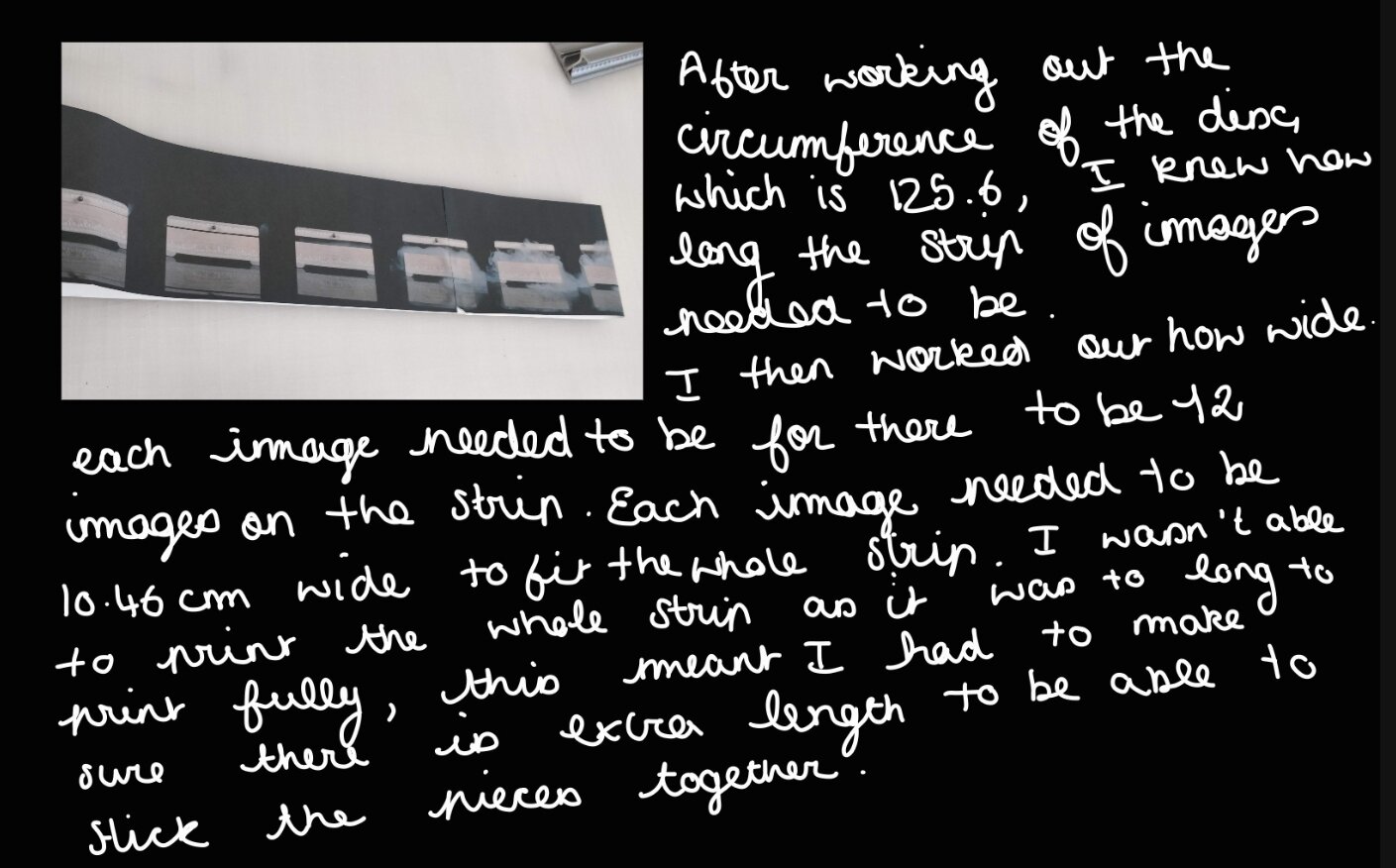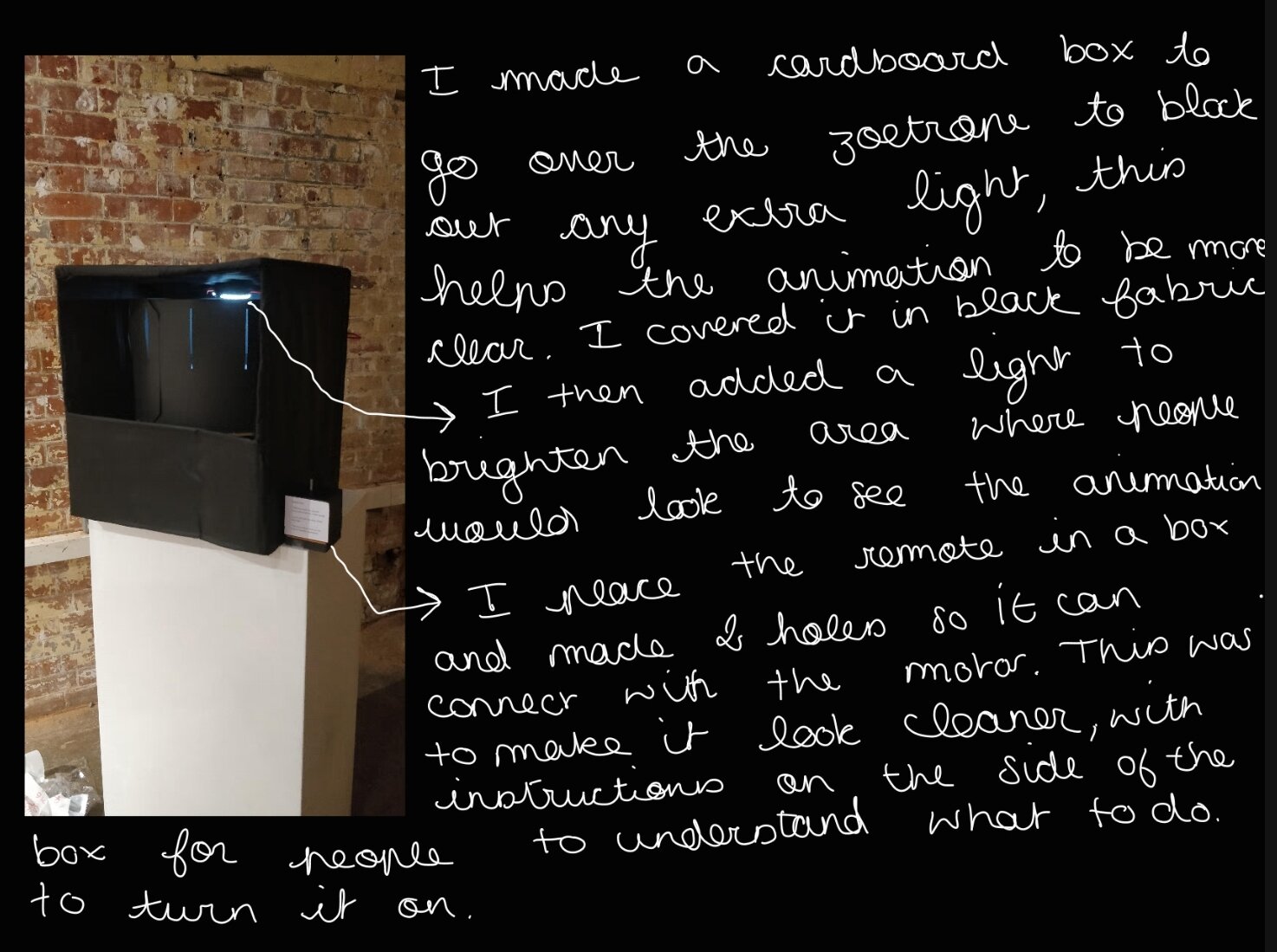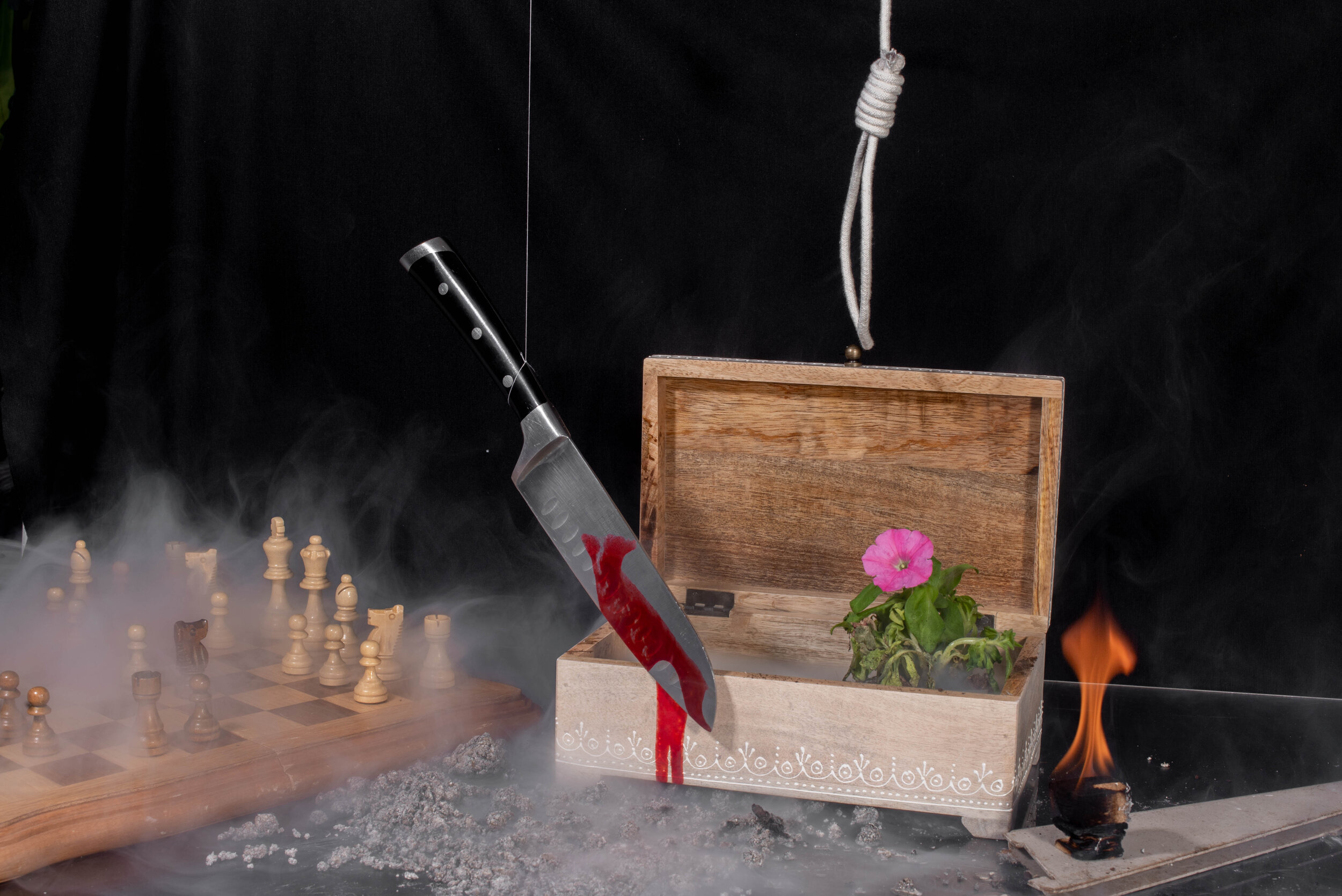This body of work has been such a roller-coaster ride! I have had so many different thoughts and ideas throughout the whole project and have let it go on for such a long time, however each and every idea and thought brought me so much joy and excitement, however unfortunately, due to my very short attention span, I can find something so interesting for a day or two and then find it so boring or stressful and so I then struggle with the idea which makes me want to have a new, fresh idea. I tend to have a very annoying habit of creating ideas which I think other people would find interesting and so I make unrealistic goals for myself which causes me to get extremely stressed and therefor not get on with the work, hence why it has taken me such a long time to create this project.
Although, I decided that I really needed to stop doing this and so I made the decision to reduce my ideas to something a lot more achievable but to make sure that it was still a challenge so that i can feel like I have accomplished something exciting.
I started not having a clue as to what I wanted to do for this project, but then after beginning to listen to Mythos by Stephen Fry, I realized just how much I love Greek Mythology and always have.I believe that this came from learning it in my French class in France. My teacher was very much in love with the topic and would teach it to us with such passion, I remember I used to believe he was a Greek God himself. He sadly passed away a few years ago from a heart attack and so I decided I would create this project in his honor.
My ideas went from making 12 tableaux for each God, to only making 4, then to working on Greek mythology stories instead of the Gods and having 3 different still lives of to show these stories, to having a still life of different foods rotting over time, to finally focusing on just one story and creating a few different pieces for that one story. The story I finally decided to focus on was Pandora’s box! This is mostly because it is something I have always been very interested in especially as the idea of it was shown in a Doctor Who episode which is something I have been obsessed with since a very young age. Once I had finally decided on my plans, it was so much easier and a lot less pressure to finally get my work done. The one theme that was always recurring throughout these different idea was the fact that I wanted to use Still Life as the way of showing the work. Working in the studio is something I have always thoroughly enjoyed throughout my photographic journey, having dramatic lighting and exciting compositions is really very compelling to me. I really enjoy working in a very clean type of setting but having a bit of a chaotic subject, so this story was perfect as there is no set way of doing it, I could be as playful and indirect as I wanted to be which was very exciting. I was very highly influenced by Dominic Davies for the most part of the visuals within this project in terms of lighting and creating the still life works in a very symbolic way, I really admired his Synesthesia project and how playful each and every object in the frame was as well as the gorgeous colours and mysterious lighting.
Ori Gersht was another artists I was very interested in as I feel he taught me how to involve a lot more concept into my work without it necessarily being visually there, I never thought of using photography in a scientific or anything other than it being visually conceptual or even just visually pleasing. I have always had a very big interest in the concept of time and I was really glad to be able to use it within this project. The main way I was able to show time in this project was through the use of the zoetrope and how conflicting it was with the idea of still life, as I used still life images to create the animation I was really glad to be able to bring the idea of clashing concepts into my work as I really love to have that feeling of uneasiness and imperfection as there is a disagreement in place.
I have always been a sort of mixed media type person in terms of messing around with my images and creating something different to a simple photograph, so i was really excited and pleased when I decided to create something a bit more technical for this project! I have always been interested by animations, I remember my sister created one in Primary school and we would watch it every now and then as it was very funny, but I always found the idea of a flip book or stop motion films to be so very alluring and so to be able to create something in this subject was something that I really enjoyed doing. Luckily, I have my boyfriend is very good when it comes to the technical side of things, so in this case he was able to build the Lego motor which was used to power the Zoetrope, luckily he already had all of the parts. Meaning that I only needed to get a few extra bit to make the whole thing become a reality! Even though it was very stressful, the final result was so exciting! Creating the photos for the animation was a lot more difficult than I realized it would be and was most likely the part which took the most amount of time, having to be careful of my every move as if the setup were to move even slightly, it would have messed up the whole thing, including if the lights were changed even a little bit. Having the vapor come out into the frame and in the box was a cool effect to create that sense that something is happening, which it was in this case.
The idea is that people would look into the zoetrope, see the animation, from the text with the display, they would recognize that it is to do with Pandora’s Box and then when they look at the still life image, they would, hopefully, relate to the objects which are in the shot and create their own ideas of what evils came out of the box and what Hope means for them in their lives. This is by far the most exciting piece I have put together and I have worked so so hard to get it all up and running.
I have enjoyed this project very much but it has caused me so much anxiety and mental pressure that I am so glad it is finally over! I have learnt so much from this one project alone which does not even seem to necessarily be related to the project itself. The main thing I have learnt is that I like to take my time with my work and I have a lot of different ideas and it is OK if my pace is not the same as everyone else’s, the fact that I work slower is just part of who I am as an artist and needing a little extra time to put my work together is completely OK.
Overall, this has been by far the most exciting, joyful and very stressful project I have done so far, and I cannot believe it marks the end of my University journey! Even though it has been a very weird and apprehensive journey, it has been the best years of my life so far and I am so glad that I decided to go ahead with it.
Bibliography
Adobe Acrobat extension for Google Chrome (no date). Available at: https://helpx.adobe.com/acrobat/kb/acrobat-pro-chrome-extension.html (Accessed: 19 April 2021).
Animation, in et al. (no date) ‘18 Classic Myths Explained with Animation: Pandora’s Box, Sisyphus & More | Open Culture’. Available at: https://www.openculture.com/2019/02/18-classic-myths-explained-with-animation-pandoras-box-sisyphus-more.html (Accessed: 12 May 2021).
Athéna à Athènes (no date) Polyxenia en Méditerranée. Available at: http://www.polyxenia.net/athena-a-athenes-p1323144 (Accessed: 22 April 2021).
Austin Parks & Recreation (2020) Make a Praxinoscope. Available at: https://www.youtube.com/watch?v=iBftZ0-xvmw (Accessed: 12 May 2021).
Brouwers, J. (no date) Who’s Pallas? - Or: Greek mythology is a mess, Ancient World Magazine. Available at: https://www.ancientworldmagazine.com/articles/whos-pallas-greek-mythology-mess/ (Accessed: 23 April 2021).
Cohen, B. (1997a) ‘The Early Greek Palladion: Two Bronze Statuettes in America’, The Journal of the Walters Art Gallery, 55/56, pp. 11–26.
Cohen, B. (1997b) ‘The Early Greek Palladion: Two Bronze Statuettes in America’, The Journal of the Walters Art Gallery, 55/56, pp. 11–26.
Cristina de Gennaro (no date). Available at: https://www.cristinadegennaro.com/photographs- (Accessed: 20 March 2021).
Definition of palladium | Dictionary.com (no date) www.dictionary.com. Available at: https://www.dictionary.com/browse/palladium (Accessed: 23 April 2021).
dev, S. U.- (no date) 30 of the Most Famous Tales from Greek Mythology. Available at: https://greektraveltellers.com/blog/30-of-the-most-famous-tales-from-greek-mythology (Accessed: 12 May 2021).
Gale OneFile: News - Document - Why art and storytelling owe a great debt to Greek mythology. (no date). Available at: https://go.gale.com/ps/i.do?p=STND&u=bsuc&id=GALE%7CA656117877&v=2.1&it=r&sid=ebsco (Accessed: 15 April 2021).
History, T. E. of G. M. (2020) ‘Top 14 Ancient Symbols of Bravery & Courage with Meanings’, Give Me History, 30 September. Available at: https://givemehistory.com/symbols-of-bravery-courage (Accessed: 19 April 2021).
Hubble Polaroids | Deep Space Photography | Melanie King (no date) Melanie King. Available at: https://www.melaniek.co.uk/hubble (Accessed: 19 March 2021).
Images and Representations (no date). Available at: http://www.goddess-athena.org/Encyclopedia/Athena/Images.htm (Accessed: 23 April 2021).
Joel-Peter Witkin | God of Earth and Heaven, Los Angeles (1988) | Available for Sale | Artsy (no date). Available at: https://www.artsy.net/artwork/joel-peter-witkin-god-of-earth-and-heaven-los-angeles (Accessed: 20 March 2021).
magsqvideo (no date) Robyn Stacey. Available at: https://www.youtube.com/watch?v=NTiA1HMe9eU (Accessed: 27 July 2021).
Most Famous Stories of Greek Mythology (2020). Available at: https://www.greekboston.com/culture/mythology/most-famous-stories/ (Accessed: 18 March 2021).
Myrtle Entertainment (2012) CLOUD | The Trojan Horse (from jmyrtle13 Productions). Available at: https://www.youtube.com/watch?v=9RYGQQ_qybY (Accessed: 12 May 2021).
Pruitt, S. (no date) The Lumière Brothers, Pioneers of Cinema, HISTORY. Available at: https://www.history.com/news/the-lumiere-brothers-pioneers-of-cinema (Accessed: 9 July 2021).
Robyn Stacey - Stills Gallery (no date). Available at: http://www.stillsgallery.com.au/artists/stacey/index.php?obj_id=series&nav=12 (Accessed: 27 July 2021).
Still Life Photography - The Moving Image of an Inanimate World | Widewalls (no date). Available at: https://www.widewalls.ch/magazine/still-life-photography (Accessed: 7 July 2021).
“Such as I Have Painted” : Poe, “The Masque of the Red Death,” and the Vani...: Bath Spa Library (no date). Available at: https://eds-b-ebscohost-com.bathspa.idm.oclc.org/eds/pdfviewer/pdfviewer?vid=1&sid=632d37c9-8c1b-4202-bbff-33ffe25ee581%40pdc-v-sessmgr02 (Accessed: 29 July 2021).
Symbolism Painting Movement (no date). Available at: http://www.visual-arts-cork.com/history-of-art/symbolism.htm (Accessed: 6 July 2021).
TED (2017) The forgotten art of the zoetrope | Eric Dyer. Available at: https://www.youtube.com/watch?v=_B9A3J70IPQ (Accessed: 12 May 2021).
‘The Archive of Gesture Alexandra Lethbridge’ (no date) Yogurt Magazine. Available at: https://yogurtmagazine.com/portfolio/the-archive-of-gesture-alexandra-lethbridge/ (Accessed: 14 April 2021).
The Icarus Syndrome: Execs Who Fly Too Close to the Sun (2019) INSEAD Knowledge. Available at: https://knowledge.insead.edu/blog/insead-blog/the-icarus-syndrome-execs-who-fly-too-close-to-the-sun-11851 (Accessed: 13 May 2021).
The Secret Language of Still Lifes (no date). Available at: https://www.messynessychic.com/2019/04/05/the-secret-language-of-still-lifes/ (Accessed: 6 July 2021).
‘Tout savoir sur la déesse Athéna’ (2019) Anciennes Civilisations, 6 November. Available at: https://anciennescivilisations.com/histoire-grece/tout-savoir-sur-la-deesse-athena (Accessed: 22 April 2021).
Villing, A. C. (no date) ‘The Iconography of Athena in Attic Vase-painting from 440–370 BC’, p. 155.
‘Visual Art 2019 v1.1 Unit 2 high-level annotated sample response’ (2019), p. 3.
Zoetrope (no date) National Museums Scotland. Available at: https://www.nms.ac.uk/explore-our-collections/collection-search-results/ (Accessed: 12 May 2021).
(No date).


